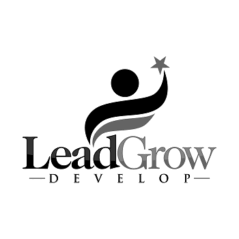In a world where businesses strive to remain competitive, profitable, and forward-thinking, one often-overlooked factor can significantly impact success: electricity costs. Especially for large commercial and industrial enterprises, energy expenses can represent a substantial chunk of monthly overhead. But there is good news—securing the best commercial electricity rates can transform how organizations allocate resources, manage growth, and drive innovation.
For leaders and decision-makers who prioritize sustainable expansion, the role of strategic electricity procurement is more relevant than ever. Below, we’ll delve into why energy matters so profoundly at the commercial scale, explore methods for finding cost-effective rates, and discover how these moves can fuel organizational development in more ways than one.
Why Energy Matters for Large Commercial and Industrial Facilities
For smaller organizations, electricity is a necessary but relatively manageable expense. However, large-scale facilities—factories, corporate campuses, data centers—face skyrocketing usage that magnifies any inefficiencies or billing missteps. Leadership teams must weigh a variety of factors: from ensuring consistent supply to minimizing environmental impact, all while keeping budgets healthy.
High Stakes of Operational Continuity
Imagine a manufacturing plant or large office complex losing power unexpectedly. Whether you’re halting assembly lines or forcing thousands of employees offline, downtime can translate to massive losses in productivity and revenue. **Reliable power** is crucial; leaders need to partner with energy providers that guarantee minimal disruption and responsive customer support when issues arise.
- Avoiding Costly Shutdowns: Unplanned downtime wreaks havoc on production schedules and can erode client confidence.
- Protecting Sensitive Equipment: Data centers and advanced manufacturing facilities house technology worth millions—stable voltage and consistent power flows are vital to preventing equipment damage.
- Maintaining Safety: Proper lighting, security systems, and climate control contribute to a safe environment for employees and clients.
Increasing Emphasis on Sustainability
Leading a modern organization often includes strong commitments to sustainable practices. Large commercial buildings and factories can generate substantial carbon footprints, so **transitioning to green or renewable energy sources** is becoming part of a holistic growth strategy. Sustainable power procurement not only aligns with global environmental goals but also resonates with clients, investors, and the next generation of employees who value eco-friendly corporate cultures.
Cost Management: Unlocking Funds for Growth
One core leadership principle is maximizing organizational efficiency. By obtaining the best commercial electricity Rates, large facilities can significantly reduce overhead, freeing up cash to invest in expansion, employee development, or research and innovation.
Leveraging Deregulated Markets
In many regions, deregulation allows businesses to **shop around** for electricity suppliers rather than relying on a single utility company. This competition often drives down rates, giving high-volume users (like manufacturing plants or logistics hubs) ample negotiating power.
- Bulk Purchasing Power: High electricity usage can be an advantage if you negotiate effectively. Suppliers may offer preferential pricing for large, consistent loads.
- Tailored Contracts: Instead of a one-size-fits-all deal, you can customize terms—like rate structure, contract length, or energy source allocation—to match operational needs.
- Strategic Timing: Watch market trends to lock in rates when prices dip, shielding your enterprise from future spikes.
Reducing Hidden Fees and Peak Charges
Large facilities typically experience *peaks* in power usage—perhaps in the morning when machines power up or midday when AC systems work the hardest. If these spikes coincide with the grid’s peak demand, energy providers may impose extra fees.
- Demand Response Programs: Many suppliers reward businesses that lower consumption during peak times, offering rebates or discounted rates.
- Load Shifting: Adjusting certain operational tasks (like machine calibration or high-powered cleaning) to off-peak hours can reduce demand charges without harming productivity.
- Real-Time Monitoring: Employing smart meters and data analytics helps identify exactly when and why usage spikes, guiding more strategic energy consumption.
The Leadership Perspective: Driving Organizational Development
In organizations, leadership isn’t just about top-down directives; it’s about creating infrastructures and cultures that empower growth. Electricity might not be the first domain that comes to mind, but effectively managing this resource can have far-reaching effects.
Freeing Up Capital for Innovation
In large companies, cost savings from optimized electricity rates can be substantial, sometimes amounting to thousands or even millions of dollars annually. That capital can be strategically redirected:
- R&D Budgets: Fuel the development of new products, processes, or systems that strengthen market position.
- Employee Programs: Provide better training, incentives, or technology tools to boost team performance.
- Market Expansion: Reinvest in new locations or global ventures, relying on stable overhead budgets for long-term planning.
By framing energy savings as an investment engine, leaders link cost management to corporate growth and strategic advantage.
Enhancing Corporate Reputation
Modern clients, stakeholders, and employees are **environmentally conscious**—a brand’s sustainability efforts can significantly shape public perception. Choosing renewable energy plans or investing in energy-efficient technology isn’t merely a cost-saving measure; it can become a *core message* about corporate responsibility.
- Green Certifications: Large commercial facilities adopting renewable energy may earn industry-specific eco-certifications. Displaying these achievements can build trust and brand loyalty.
- Employee Engagement: Many professionals prefer to work for companies with a demonstrable commitment to reducing environmental impact.
- Investor Appeal: Green initiatives often attract investors looking to back socially responsible businesses with solid risk management strategies.
Securing the Best Commercial Electricity Rates
Understanding the importance of efficient energy procurement is only half the battle; the next step is implementing a systematic approach to find and lock in optimal rates. From audits to negotiations, leaders can deploy several strategies to keep costs under control.
Conduct an In-Depth Energy Audit
Before you renegotiate contracts or switch suppliers, you need a clear snapshot of how (and where) energy is used within your facility. An **energy audit** may reveal inefficiencies like old, power-hungry equipment or misaligned operational schedules.
- Equipment Upgrades: Replacing outdated machinery can dramatically reduce power usage.
- Lighting Overhauls: LED lighting systems or motion-activated sensors can slash lighting costs in vast commercial spaces.
- HVAC Optimization: Regular maintenance and technology upgrades in heating and cooling systems yield significant savings in large buildings.
Leaders often find that these improvements pay for themselves quickly, especially once combined with favorable electricity rates.
Compare Multiple Suppliers and Plan Options
If your region offers a deregulated energy market, you’re not obligated to stick with a default utility provider. Reach out to several suppliers and request detailed quotes:
- Fixed vs. Variable Pricing: A fixed-rate contract provides budget predictability, while variable rates can net savings if energy prices fall.
- Short-Term vs. Long-Term: Longer contracts might secure lower per-kWh rates, but short-term plans give flexibility to pivot if market conditions change.
- Renewable Energy Mix: Some providers allow you to select how much of your power comes from renewable sources, a key option for eco-minded leadership teams.
Given the complexity of large-scale electricity agreements, some businesses opt to work with an energy broker or consultant who specializes in commercial and industrial procurement. This can streamline the comparison process and open doors to exclusive offers.
Building a Culture of Efficiency
Securing favorable electricity rates is only one aspect of a comprehensive energy strategy. Organizations that embed energy mindfulness into their culture can drastically reduce consumption—and further amplify the impact of cost-saving rates.
Employee Engagement and Training
Frontline employees often see small inefficiencies firsthand—like machines left running during downtime or staff rooms that stay brightly lit even when empty.
- Incentive Programs: Reward departments or teams that reduce energy usage without sacrificing quality.
- Awareness Campaigns: Use posters, digital signage, or internal communications to highlight how everyone can contribute—turning off lights, shutting down idle workstations, and reporting inefficiencies.
- Eco-Champions: Designate a representative in each department to coordinate energy-saving ideas and report them to management.
Continuous Monitoring
Once you’ve secured strong contracts, it’s essential to stay proactive. Smart meters and advanced monitoring systems let facility managers see real-time data on energy consumption, pinpointing spikes or anomalies before they become costly issues. Regular reviews of this data help teams adjust strategies, refine operational schedules, and ensure no hidden inefficiencies creep back in.
Risk Management in a Changing Energy Landscape
Political shifts, regulatory changes, and technological breakthroughs can all influence energy markets. Leaders need a forward-looking approach to hedge against unexpected price swings or supply disruptions.
Diversify Energy Sources
Relying exclusively on one type of energy can be risky. Combining grid power with on-site generation—like solar panels or backup generators—adds resilience. If part of your facility’s energy comes from renewables, you’re less vulnerable to sudden fossil fuel price hikes.
Secure Flexible Contract Terms
Locking in a five-year contract might offer savings now, but what if technological advances make cheaper green energy widely available next year? Leaders often negotiate contracts that *permit adjustments* in response to market changes, giving them the agility to seize new opportunities.
From Expense to Advantage: The Future of Commercial Electricity
Large industrial and commercial facilities once treated electricity like a static cost of doing business—a monthly bill that had to be paid, regardless of rate. But with deregulation, technological innovation, and renewable energy expansion, this narrative is evolving. Electricity can become a strategic lever for:
- Financial Growth: Lower overhead means more capital to reinvest.
- Employee Development: Training, bonuses, and new hires get a boost when energy bills shrink.
- Brand Expansion: A leadership stance on sustainability can open doors to partnerships, collaborations, and new consumer segments.
Leaders who treat electricity procurement with the same rigor they’d give any major business function—like marketing, finance, or product development—position their organizations to thrive. From an operational standpoint, energy-savvy leadership fosters resilience, innovation, and cost-effective growth that scales in a world driven by ever-rising competition.
Key Takeaways for Transformative Leaders
- Recognize Energy’s Strategic Role: Electricity isn’t just a bill; it’s a major input that can either stifle or accelerate progress.
- Negotiate Astutely: Exploring multiple suppliers and plan structures can unlock substantial savings for large facilities.
- Align with Sustainability: Eco-friendly initiatives can amplify brand value, attract top talent, and future-proof your organization against regulatory shifts.
- Monitor and Adapt: Markets evolve. Continuous data analysis and contract flexibility ensure your rates remain competitive.
- Reinvest for Growth: Redirecting saved capital into R&D, workforce development, or expansion further cements your competitive edge.
When an organization secures the best commercial electricity rates, it doesn’t just lower utility bills. It paves the way for smarter allocations of resources, fosters a culture of efficiency, and underscores the commitment to responsible leadership. As industries become more interconnected and technology continues to disrupt traditional business models, those who harness energy intelligently will undoubtedly lead the charge—lighting the path toward sustainable, profitable expansion.

